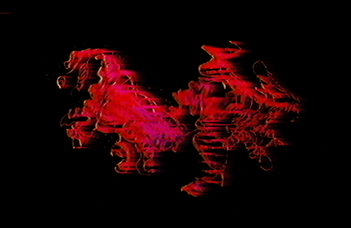Az emberi nyelvkészség genetikai háttere
The genetic background of human language

Presenting the journey of a language gene. The question “why can we speak while other animals can't?” or “how did language emerge in humans?” has no straightforward answer because language is a very complex and unique trait for homo sapiens, and many factors contributed to its emergence through our history of evolution. All animals communicate but our communication system is the most advanced. Even chimpanzees - our closest living relatives - who are very intelligent and 98% genetically identical to us don’t have this trait. So,what made us different?
Two decades ago, scientists defined a single gene that played a major role in our ability to speak and perform verbal communication. It is called foxp2. Mutations in this gene in humans is clinically associated with language and speech disabilities. And while this gene is present in other species like birds, mice, and other primates, it operates differently in humans.
This gene encodes the foxp2 protein which regulates the function of many other genes, some of which are essential for brain plasticity, neurotransmission and the development of some brain areas involved in speech development, but the exact role and target pathways remain under investigations.
How proteins are made:
Proteins are built up of smaller molecules called Amino Acids, the variations in amino acids’ sequences give proteins unique structures,and it is essential to mention that protein activity highly depends on its 3D structure, thus on the amino acid sequence. And of course, each protein is encoded by a DNA sequence called “gene” and each amino acid in the protein has a corresponding triplet of nucleic acids called a “nucleotide” on the gene.
These facts are important to understand that the function of a proteinis shaped by the mutations\changes the gene faces over time.
So, what happened to human foxp2?
Around 6 million years ago lived the humans and chimpanzees’ last common ancestor, after that the branches of the two species split on the evolutionary tree.
While chimps still have the more ancient “version”of foxp2, human gene has undergone two small yet crucial changes; only 2 amino acids out of 713 have changed since our branch split from that of chimpanzees giving the protein new shape and functions.
We still don’t know when this change exactly happened,but archeological studies show that our extinct relatives homo Neanderthals had the same sequence of amino acids of foxp2 as us. It remains uncertain whether they could speak. But what we know is that the new “version” of the gene emerged at least half million years ago when our common ancestor with neanderthal lived.
It is true that foxp2 is only one piece in the puzzle of language emergence, but its journey is a very interesting example of how seemingly minor changes on a molecular level can account for huge differences in function and can cause a salient plot twist that changes the whole story of a species.
Back to the main page of the project
További olvasnivaló magyarul:
Magyar Tudomány: Létezik-e tagolt emberi beszéd képességéért felelős gén? - Venetianer Pál

